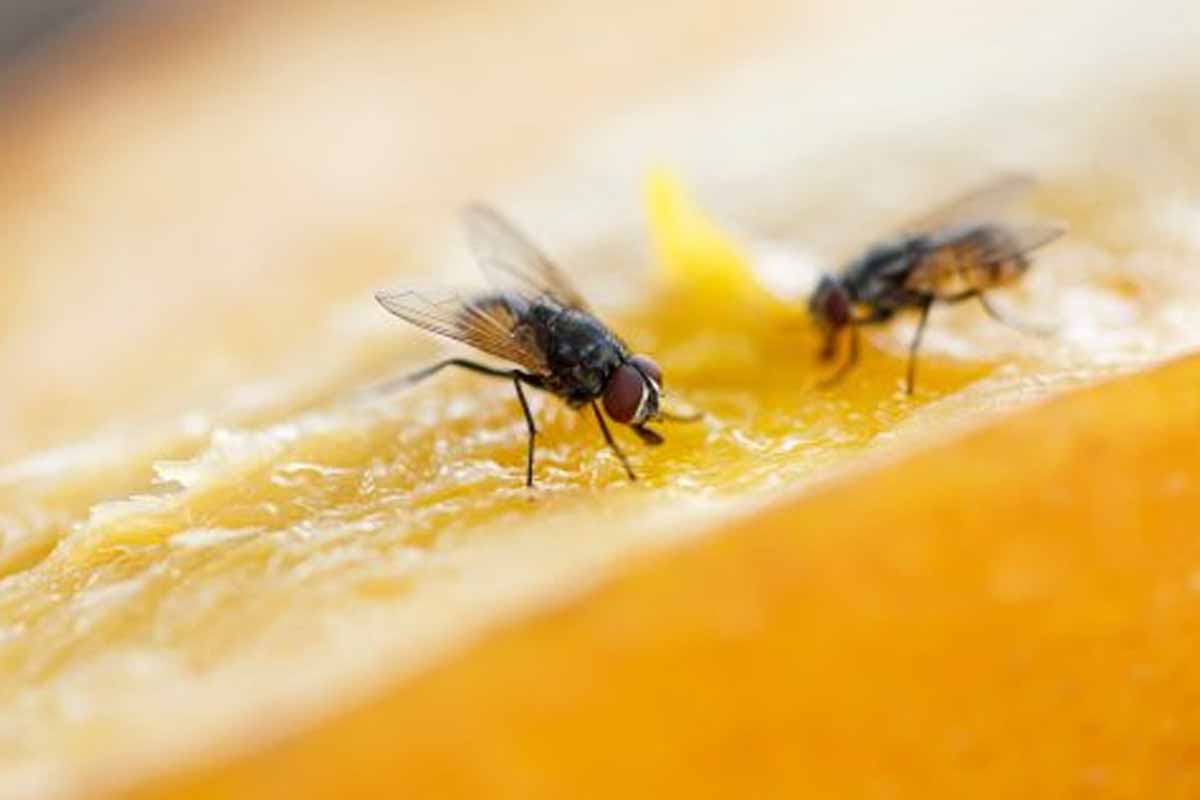Tiny kitchen invaders can turn snacks into targets and evenings into swatting sessions. A simple, safe fix sits in your cupboard, costs almost nothing, and works fast. Set it up in minutes, then get back to dinner while the trap does the quiet work. With flies handled, your counter, fruit bowl, and peace of mind finally breathe again, without sprays, gadgets, or lingering fumes. The method blends into your home and teaches a neat bit of science.
Why your kitchen attracts unwanted guests
In 2023, households reported stubborn kitchen invasions as warm rooms and fermenting scraps created perfect conditions for tiny fruit-loving insects. Heat, moisture, and sugar cues invite them from windows and drains. Even a forgotten juice cup or ripe banana signals a feast, so they gather quickly, then linger near bowls.
They seek moisture and fermenting aromas from compost bins, dish sponges, and recycling. An overripe banana pulls them faster than any scented candle, while a rogue raisin under a highchair keeps them circling. Families with pets and toddlers prefer gentle solutions, since sprays and zappers add fumes, noise, and mess.
A quiet alternative solves the problem without harsh chemicals or pricey gadgets. A small jar, a common pantry liquid, and a drop of soap build an efficient trap. You assemble it in minutes, set it near hotspots, and let physics handle the rest while your kitchen keeps its calm.
Build a Jar Trap that flies can’t resist
Gather a small jar with a metal lid, a hammer, and a nail. Tap several tiny holes in the lid; keep them just large enough for entry. Rinse the jar, dry it well, and clear nearby surfaces. Preparation matters, because clean gear improves scent trails and keeps the trap working.
Pour one quarter cup of apple cider vinegar into the jar. Add a few drops of liquid dish soap, then swish gently. The soap reduces surface tension, so insects cannot stand or lift off once they touch it. This small tweak turns a scented lure into a reliable capture mechanism.
Screw the lid on, then place the jar near the fruit bowl, compost bin, or sink. Warm corners amplify the aroma, so pick spots with gentle airflow. As flies enter through the holes, the slick surface pulls them down, and escape fails. No plastic wrap required, only simple parts working
Why this trap works on flies every time
Vinegar mimics the scent of fermenting fruit, so the jar functions like a buffet. Soap collapses the water’s surface tension, which removes the landing pad. They follow a strong cue, enter easily, then meet a slick boundary. Because exits are hard to locate, they spiral downward and stay contained.
Comparisons show this setup outperforms complicated alternatives. You avoid plastic film, rubber bands, electric zappers, and noisy fans. Because the scent plume rises through neat openings, captures stay consistent across days. Placed correctly, it scales with multiple jars and maintains steady, predictable reduction indoors.
Informal trials echo the science. One parent on TikTok counted more than thirty captured in one afternoon. Another reviewer said the method saved both sanity and strawberries. When flies surge after a warm day, adding a second jar near the sink or bin smooths peaks and speeds recovery indoors.
Safer kitchens, calmer routines, and small lessons for kids
Families favor this approach because safety sits first. No toxic aerosols drift across breakfast bowls, and no buzzing contraptions frighten pets. The jar looks ordinary, works quietly, and stays effective for days. Cleanup takes moments, which supports nightly routines and keeps counters inviting, even during busy weeks.
The setup doubles as a quick science lesson. Kids see how scent lures, airflow, and surface tension shape behavior. With supervision, they help mark dates, move jars, and note changes. Responsibility grows naturally, because the routine feels easy, safe, and useful while protecting snacks and calm time.
Entertaining becomes simpler, indoors or outdoors. Place a discreet jar near the drinks station and another by the recycling. Because the materials cost almost nothing, scaling stays easy. As flies dip in the evening warmth, the traps keep plates clear and conversations relaxed without tinkering, noise, or visual clutter.
Placement, upkeep, and prevention for lasting relief
Placement decides performance. Choose warm corners with steady airflow and nearby food signals, like the sink, compost caddy, or fruit bowl. Rotate locations every few days to track where captures concentrate. When activity drops, keep one jar running as maintenance and stash spare lids for quick swaps.
Upkeep stays simple. Refresh the vinegar every few days, rinse the jar, and wipe the lid. Empty recycling often, seal compost, and bag scraps tightly. Dry the sink at night, squeeze sponges well, and store ripe fruit in the fridge when heat rises after sunny afternoons.
Know the limits. If the lid bends or holes widen, start a fresh jar. During heatwaves, add a second unit near drains. According to user reports, this approach beats film-covered bowls because the scent flows freely, while soap remains active and maintenance stays predictable across busy weeks.
Simple pantry steps restore calm and keep pests away
Keeping a tidy counter matters, yet results improve when physics helps the routine. A small jar, vinegar, and soap work as an affordable system that stays gentle, clean, and quiet. Place it smartly, refresh it regularly, and coach family to help. With flies handled this simply, evenings feel calmer and kitchens look ready again.
